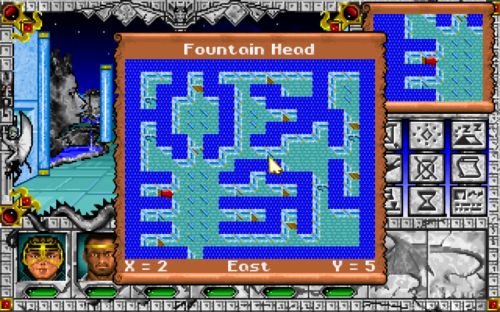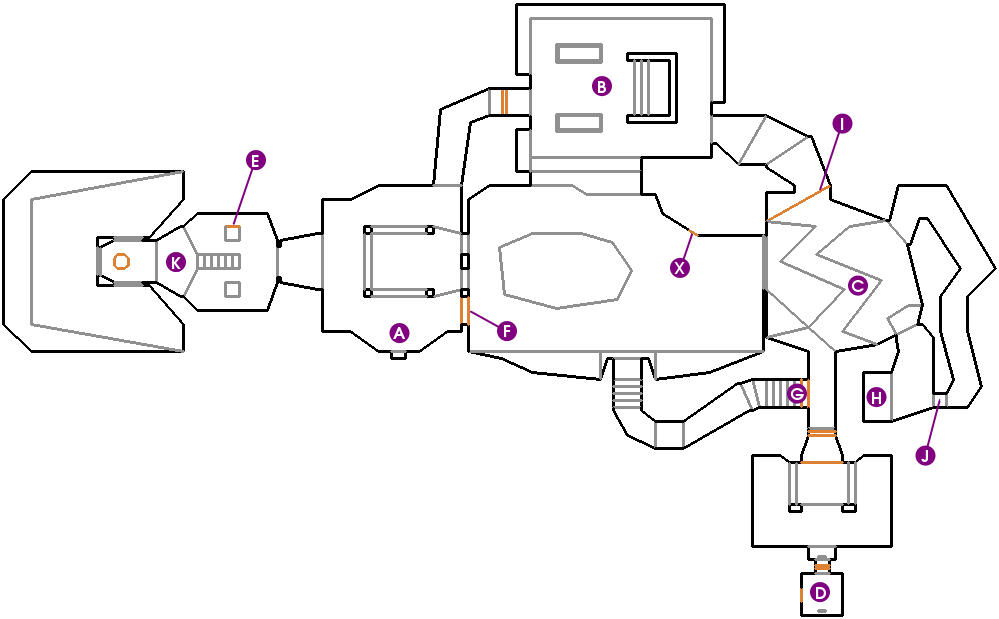In the old days, when I was playing Wizardry, you took some graph paper and a pencil and drew your map while walking around the maze. For some reason I cannot explain, it was partially a fun experience. But in the digital age, that seems a bit obsolete, the computer should be able to draw it for you, but that has some consequence on the experience of the game. So I was wondering how to handle it. Here are some example from other games:
Sword & Serpent: You have a minimap in the corner that auto draw and does not rotate. The drawback, is that you never look at the 1st person view since minimap navigation is less confusing.
Etrian Odyssey: You had to manually draw your own map, but since it's a Nintendo DS game, you could use the touch screen to draw your map. So no auto mapping, but a digital tool.
Wizardry: Labyrinth of the lost soul: You must cast a certain spell to get automapping enabled with your current position. It makes teleporter, rotators and other nasty maze effect obsolete as you know exactly where you are. It makes exploration much less dreadful and a bit more dull, you can constantly watch your map making it very hard to get lost. But you don't need to draw anything.
??? (DS game I forgot the name): There was auto mapping, but it never showed your current location. So you could only deduce where you where while exploring new areas, but once the level is explored, there is no position marker so you must remember where you are. It's a bit weird mechanism, and teleporting would reveal itself. But from a game play perspective, it makes it easier for new areas, but once you have the map, you better know your way.
Wizardry 1: In the original wizardry game, you had a spell that gave you your maze coordinates to help you map the maze. That means it was a kind of limited use compass.
Possible solutions
I tried to ask myself, what makes paper cartography different. From what I can see, the lack of position marker, the possibility to make errors due to some maze effects and, of course, human errors are the possible effects of drawing maze on paper.
If I automate the system, human error is not really an option. So I could do like the DS game, hide your position marker but auto draw new areas.
The other idea could be to simulate some errors, like if there are maze events that change your position or facing, the auto mapping system ignores it and continue mapping as if did not happen. The automapping would stop drawing as soon as inconsistencies occurs. The player would need to manually erase areas of the map he consider bogus. He could also pause mapping if he knows that he is at the wrong place. The drawback of such method, is that it is much more complicated to program and to handle by the player.
Another idea is to automap without the details of the walls and doors. So you can easily know in which portion of the dungeon you are without giving you the path to reach the destination. With such map is that it does not tell you much information, so you need to know the maze. It could indicate you that you have teleported, but not giving you the path to get out of there.
I also thought of having nodes or check points that could act like a camera of the surrounding areas. It guaranties you that this position in the maze is really there, and that the surroundings are really what to expect. But there would be no automapping between those nodes. So here, it's portions of the map that is revealed instead of some type of information.
Do you prefer any method?
Is there any other solutions?








Your point of view is interesting: make sure that there is so much stuff to do int he maze that having access to the wall and door configuration has little impact on the gameplay.